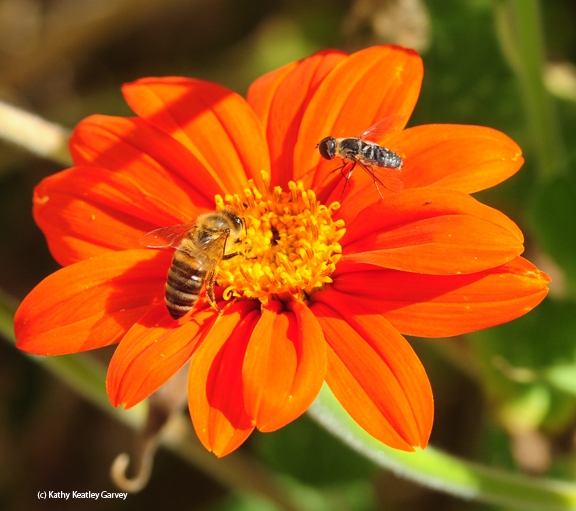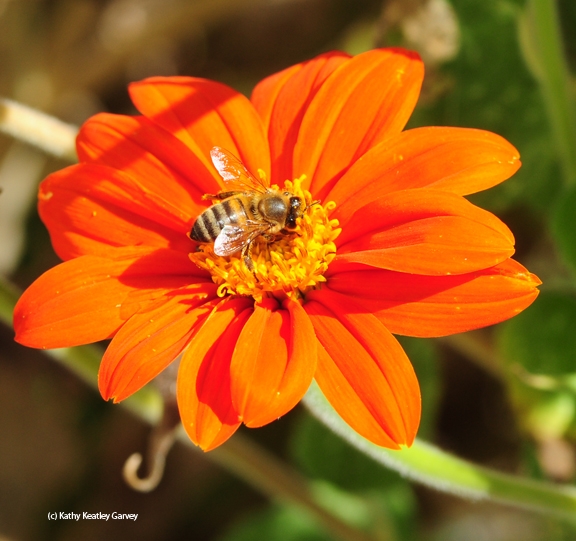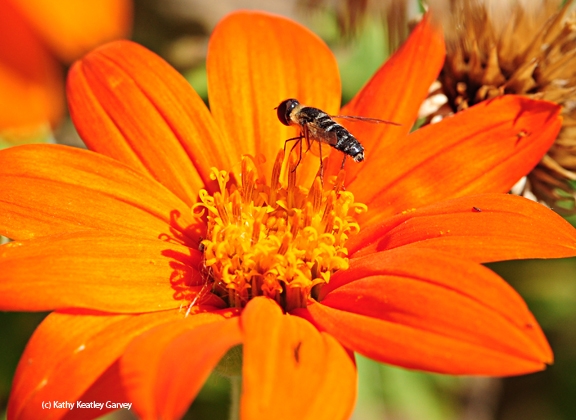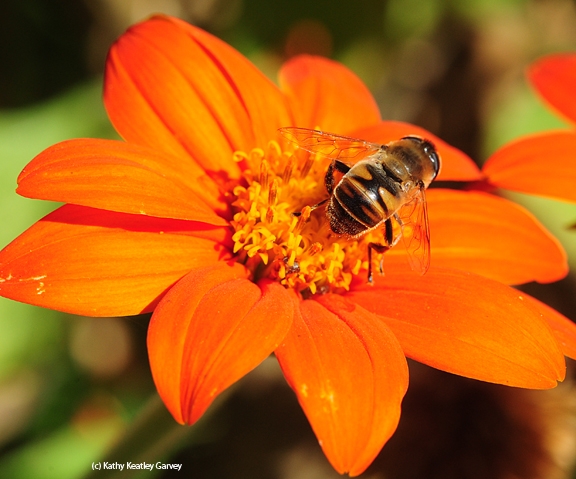- Author: Kathy Keatley Garvey
'Tis "Friday Fly Day" (also known as #Fridayflyday in the Twitter world), and it's almost Halloween.
So why not combine the two with a common drone fly, Eristalis tenax, nectaring on a pumpkin-orange Mexican sunflower, Tithonia rotundifola?
To the untrained eye, the drone fly is often mistaken for a honey bee. Both, however, are pollinators.
But the larva of the drone fly is known as a rattailed maggot and feeds off bacteria in drainage ditches, manure or cess pools, sewers and the like. Unlike a honey bee, the drone fly has one set of wings, large eyes, stubby antennae, and a distinguishing "H" on its abdomen.
The drone fly will still be hanging around when Halloween arrives, but how many costumes have you seen glorifying the drone fly? The honey bee, yes! But a drone fly? No.
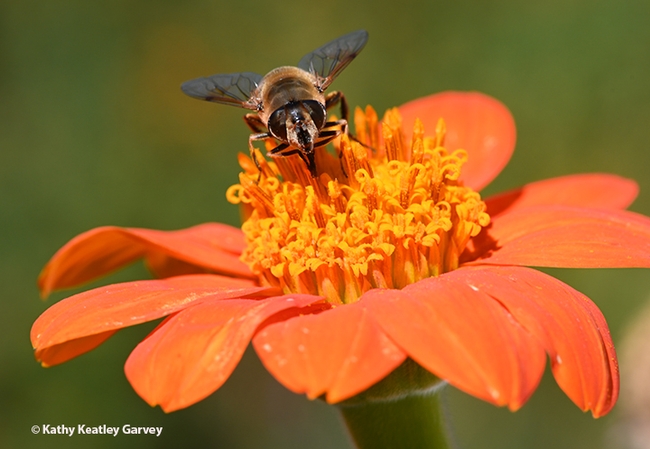
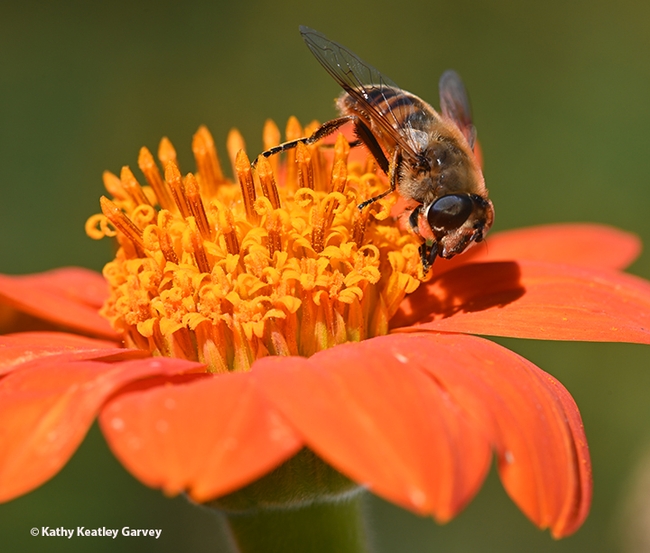
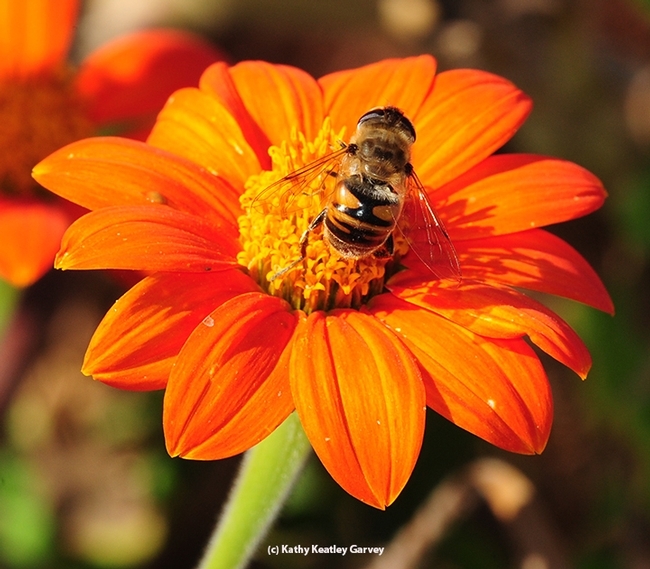
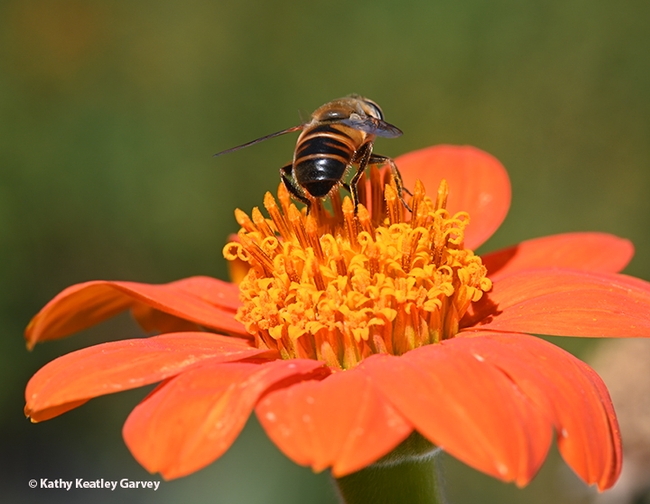
- Author: Kathy Keatley Garvey
It's Day 6 of National Pollinator Week.
Meet the drone fly (Eristalis tenax), often mistaken for a honey bee.
The late Robbin Thorp, UC Davis distinguished emeritus professor of entomology, used to jokingly call it "The H Bee," pointing to the "H on its abdomen.
It's not a bee, though, it's a fly. It belongs to the family Syrphidae (which includes insects commonly known as syrphids, flower flies, and hover flies) in the order, Diptera.
The drone fly about the size of a honey bee. However, unlike a honey bee, the drone fly "hovers" over a flower before landing.
Drone fly larvae are known as rattailed maggots. They feed off bacteria in drainage ditches, manure or cess pools, sewers and the like.
But just think of the adult. It's a pollinator. Just like the honey bee.

- Author: Kathy Keatley Garvey
Henrietta, our Stagmomantis limbata praying mantis, perches on a Mexican sunflower (Tithonia).
She is as patient as she is persistent.
The drone fly, aka syrphid and also known as a hover fly or flower fly, makes the fatal mistake of touching down on the same blossom.
Henrietta eyes it hungrily. Faster than a blink of the eye, she snares it, clutching it between her spiked forelegs.
"Well, of course, I like drone flies," she appears to be saying, between mouthfuls. "Thank you for asking."
Praying mantids are not known for their table manners. It's grab, hold and eat.
The cycle of life in the garden.
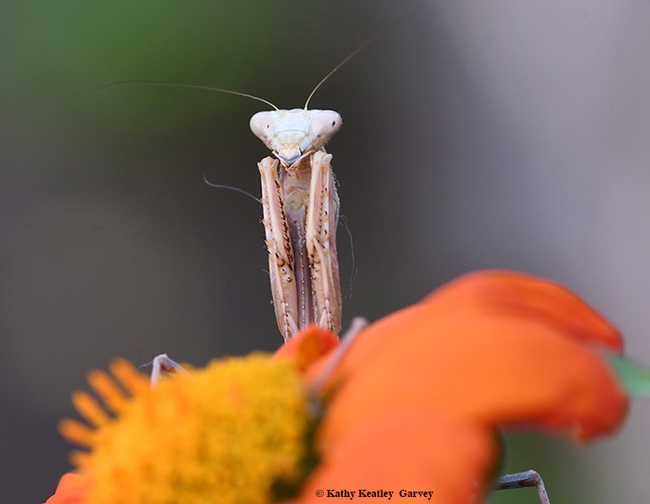
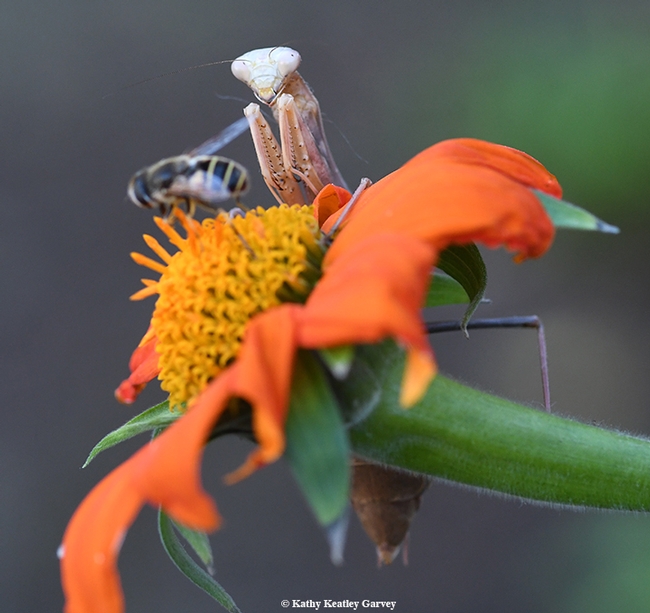
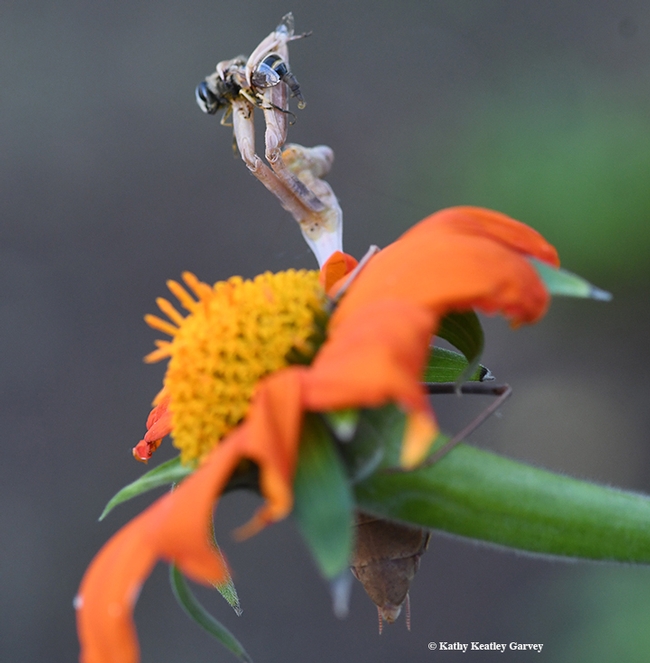
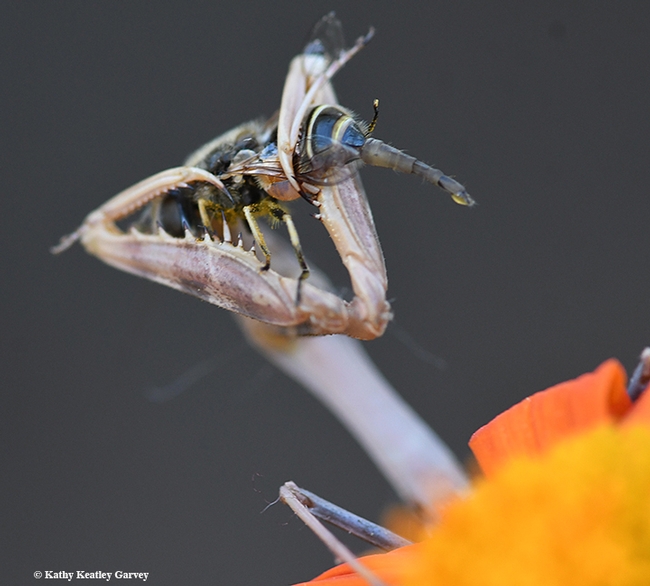
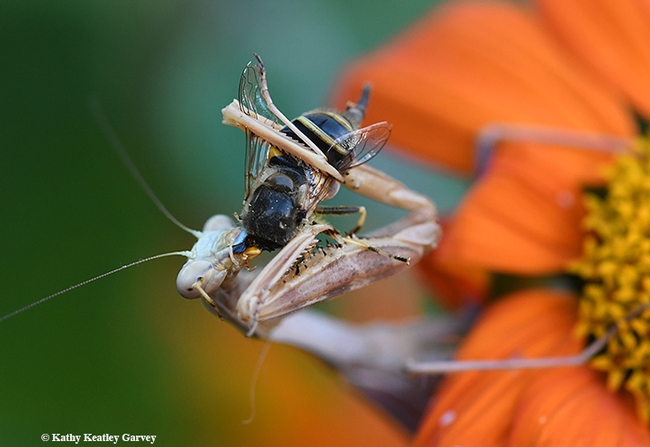
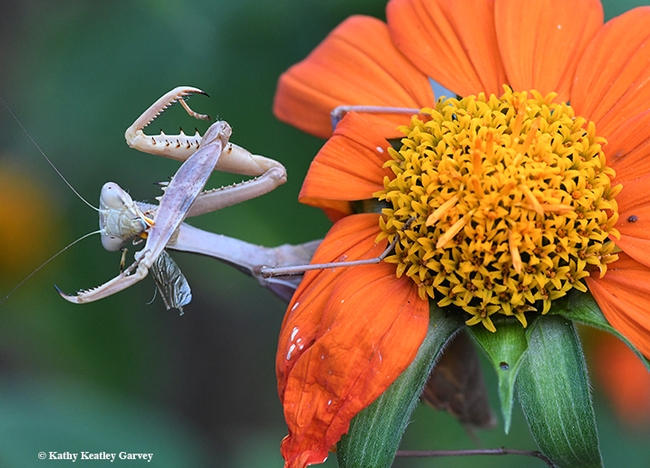
- Author: Kathy Keatley Garvey
They can't drain your bank account. They can't open up new credit cards. They can't get medical treatment on your health insurance.
But they are identity thieves, nonetheless.
Meet the drone fly (Eristalis tenax), often mistaken for a honey bee.
Indeed, it's about the size of a honey bee. In its adult form, it's a pollinator, just like the honey bee.
Unlike a honey bee, however, the drone fly "hovers" over a flower before landing. And unlike a honey bee, the drone fly has one set of wings, large eyes, stubby antennae, and a distinguishing "H" on its abdomen. Robbin Thorp, UC Davis distinguished emeritus professor of entomology, jokingly calls the drone fly "The H Bee."
Drone fly larvae are known as rattailed maggots. They feed off bacteria in drainage ditches, manure or cess pools, sewers and the like.
The fly belongs to the family Syrphidae (which includes insects commonly known as syrphids, flower flies, and hover flies) in the order, Diptera. The honey bee is Apis mellifera, family Apidae, order Hymenoptera.
One's a fly. One's a bee.
Lately we've been seeing scores of drone flies nectaring on our Mexican sunflower (Tithonia).
Identify thievery does have its advantages. Wary people and predators often shy away from drone flies, thinking they are honey bees and might sting them.
Drone flies can't sting. They can't drain your bank, either.
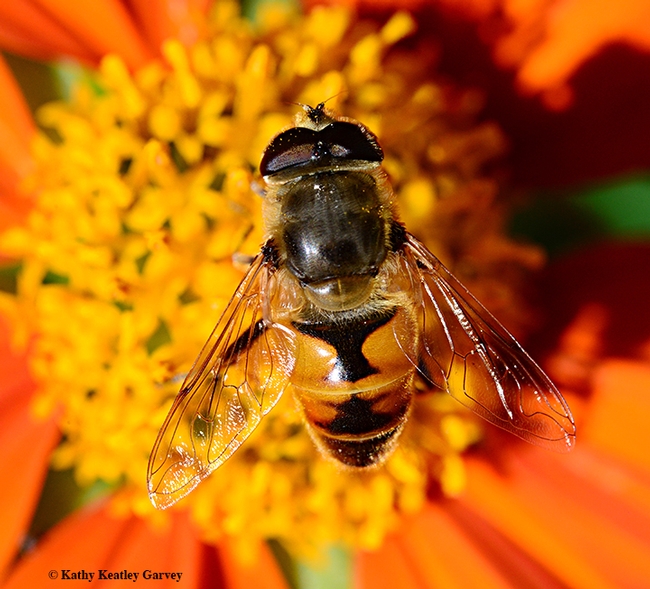
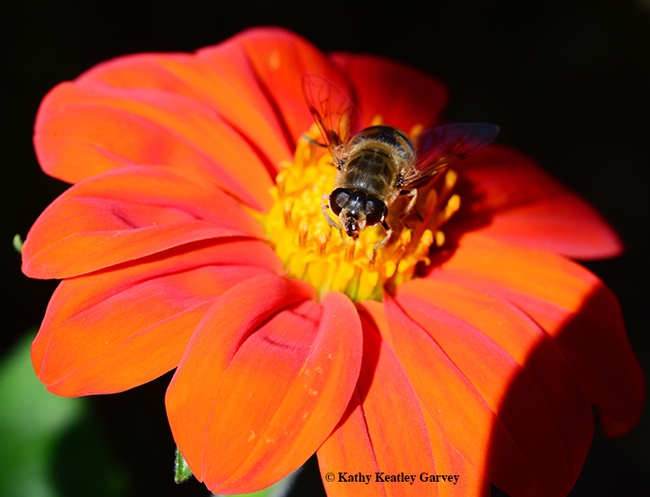
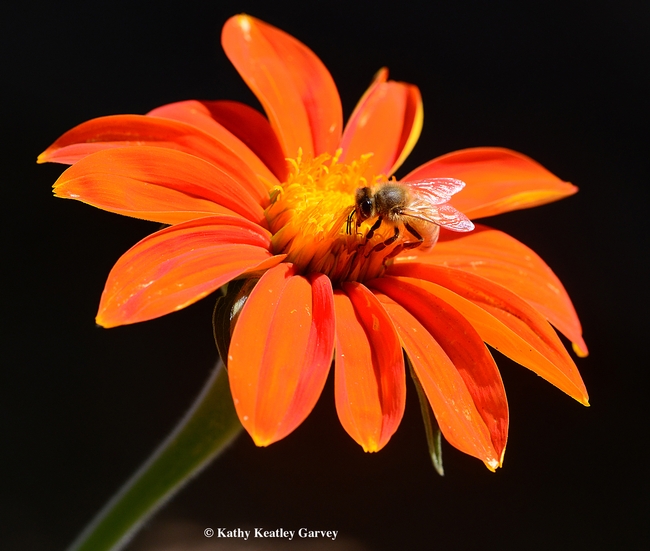
- Author: Kathy Keatley Garvey
Everybody eats in the pollinator garden.
Maybe not at the same time, but they all eat.
We noticed a syrphid fly, aka flower fly/hover fly, heading toward a Mexican sunflower (Tithonia) in our pollinator garden. Alas for the fly, it was occupied. Occupied by a honey bee (Apis mellifera).
No worries.
The honey bee soon buzzed off, and the syrphid claimed it.
The honey bee returned and took a turn.
Then another fly, a drone fly (Eristallis tenax), claimed it.
Interesting that all three are sometimes called "bees," much to the chagrin of entomologists and other scientists. It just goes to prove that not all floral visitors are flies.
- Honey bee: Order, Hymenoptera; Family Apidae
- Syrphid fly: Order, Diptera; Family Syrphidae
- Drone fly: Order, Diptera; Family Syrphidae
But they do have several things in common: (1) they're insects (2) they're pollinators (3) they're hungry and (4) they like nectar just as much as humans like sugar, especially on Halloween. And doesn't orange symbolize Halloween?

